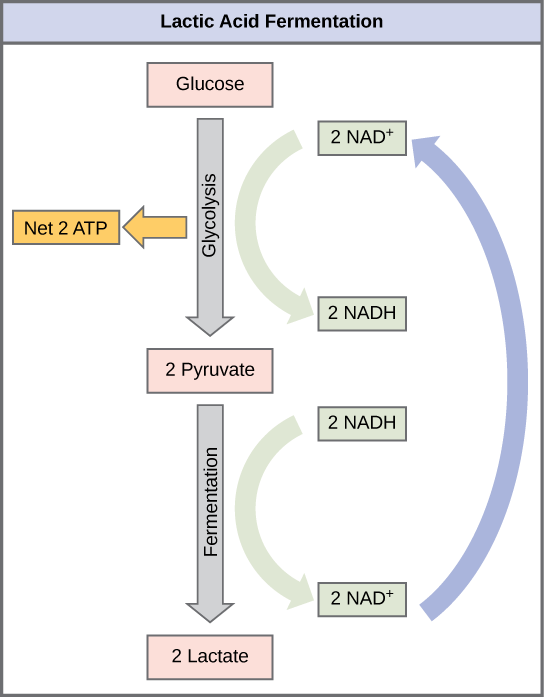Table of Contents

Introduction:
In the pursuit of achieving a well-defined and robust physique, understanding the intricate processes behind muscle growth is essential. While exercise and nutrition play prominent roles, an often overlooked player in this dynamic is lactic acid. Often misunderstood as a mere waste product, it holds the potential to be the ‘magic hormone’ that drives muscle development. This article delves into the science behind lactic acid, its role in muscle building, and effective strategies to enhance its production in the body.
Magic of lactic acid: Unveiling the Enigma
Lactic acid, a compound generated during intense physical activities, has long been misunderstood as the sole culprit behind muscle fatigue and soreness. However, recent research has unveiled its dual nature – a metabolic byproduct and a powerful stimulant for muscle growth. When muscles exert energy without sufficient oxygen (anaerobic conditions), the body produces lactic-acid as a rapid energy source. Contrary to the common belief, lactic acid isn’t solely responsible for the burning sensation during workouts; rather, it serves as a vital contributor to enhanced muscle development.

The Muscle-Building Mechanism
Lactic acid’s significance lies in its ability to trigger the release of growth hormone (GH) and insulin-like growth factor-1 (IGF-1), both integral to muscle growth. These hormones work synergistically to promote protein synthesis, which forms the building blocks of muscle tissue. Additionally, lactic-acid stimulates muscle fiber recruitment, leading to greater muscle engagement during workouts. This phenomenon, known as “metabolic stress,” creates an environment conducive to muscle hypertrophy.
Strategies to Augment Lactic-Acid Production
- High-Intensity Interval Training (HIIT): Incorporating HIIT workouts into your training regimen can substantially boost lactic acid production. Short bursts of intense exercise followed by brief periods of rest elevate lactic acid levels, promoting muscle growth.
- Compound Exercises: Engaging in compound movements like squats, deadlifts, and bench presses engages multiple muscle groups simultaneously, creating higher lactic acid accumulation.
- Eccentric Training: Emphasizing the eccentric (lowering) phase of exercises, such as slowly lowering a weight, enhances lactic acid buildup and muscle tension, stimulating growth.
- Volume and Intensity: Manipulating training volume and intensity by increasing repetitions and weight loads during workouts can lead to increased lactic-acid production.
- Short Rest Intervals: Reducing rest intervals between sets maintains elevated lactic acid levels, intensifying the muscle-building stimulus.
- Nutrition and Supplementation: Consuming carbohydrates before and after workouts provides the energy needed for lactic acid production. Additionally, beta-alanine supplementation can enhance lactic-acid buffering capacity.
- Progressive Overload: Gradually increasing the resistance or intensity of exercises challenges muscles, encouraging greater lactic acid release.
The Magic of Lactic acid is not only a powerful ally for athletes and fitness enthusiasts but also a remarkable ingredient in skincare. When your body breaks down carbohydrates for energy during intense exercise, lactic-acid is produced as a byproduct. This process helps in delaying muscle fatigue, allowing you to push harder and longer during workouts. Regular exercise leads to an increase in your body’s efficiency in managing lactic acid, which enhances your overall stamina and performance. Incorporating interval training or high-intensity workouts can further optimize your body’s lactic-acid threshold, enabling you to achieve your fitness goals more effectively.
In the realm of skincare, lactic acid shines as an exfoliant that can transform your complexion. It belongs to the family of alpha-hydroxy acids (AHAs) and works by gently sloughing off dead skin cells, revealing a brighter, smoother surface. This makes it particularly beneficial for those with dry or sensitive skin, as it hydrates while it exfoliates. Additionally, lactic-acid can help reduce the appearance of fine lines, wrinkles, and dark spots, promoting a more even skin tone. Its antimicrobial properties also make it a useful ingredient in fighting acne. By incorporating lactic-acid into your skincare routine, you can enjoy a clearer, more youthful-looking complexion.

Conclusion
In the realm of muscle building, lactic-acid emerges as a powerful ally rather than a foe. By understanding its role as a hormone trigger and muscle growth stimulant, fitness enthusiasts can optimize their training routines. Implementing strategic approaches like HIIT, compound exercises, and proper nutrition can harness the potential of lactic-acid to facilitate remarkable muscle development. Embrace the ‘magic hormone’ and embark on a journey towards realizing your muscle-building goals like never before.
In the dynamic world of muscle building, the perception of lactic acid has undergone a significant transformation. Once seen as the culprit behind muscle fatigue and discomfort, it now emerges as a potent ally in the pursuit of muscle growth and strength gains. Understanding its multifaceted role as both a signaling molecule and a metabolic byproduct unveils its potential as a catalyst for muscle development.
At the heart of this paradigm shift lies the recognition of lactic acid as a hormone trigger. During intense exercise, the accumulation of lactic acid serves as a signal to the body to adapt and grow stronger. This triggers a cascade of physiological responses, including the release of growth hormone and other anabolic factors, which promote muscle repair and growth.
Moreover, lactic acid acts as a muscle growth stimulant by inducing metabolic stress within the muscle fibers. This stress signals the body to prioritize muscle growth in order to better cope with future bouts of exercise-induced stress. Consequently, embracing the presence of lactic acid during workouts can pave the way for remarkable gains in muscle mass and strength.
To harness the potential of lactic acid, fitness enthusiasts can adopt strategic training approaches tailored to maximize its benefits. High-Intensity Interval Training (HIIT) is particularly effective in generating high levels of lactic acid, promoting muscle hypertrophy and improving overall fitness. Compound exercises, which engage multiple muscle groups simultaneously, further amplify the release of lactic acid and stimulate muscle growth.
In addition to training strategies, proper nutrition plays a crucial role in optimizing lactic acid utilization for muscle development. Consuming adequate carbohydrates before and after workouts ensures a steady supply of energy to fuel intense exercise and facilitate lactic acid production. Moreover, incorporating protein-rich foods supports muscle repair and growth, complementing the anabolic effects of lactic acid.
In essence, embracing lactic acid as the ‘magic hormone’ unlocks a new realm of possibilities for achieving unparalleled muscle-building results. By understanding its role as a hormone trigger and muscle growth stimulant, individuals can design training routines and dietary strategies that capitalize on its potential. So, embark on a journey towards realizing your muscle-building goals like never before, fueled by the transformative power of lactic acid.
The magic of lactic acid The magic of lactic acid The magic of lactic acid The magic of lactic acid The magic of lactic acid The magic of lactic acid The magic of lactic acid The magic of lactic acid The magic of lactic acid
Biology dictionary is a delightful resource for biological information.






